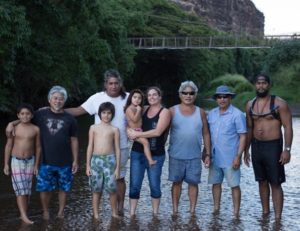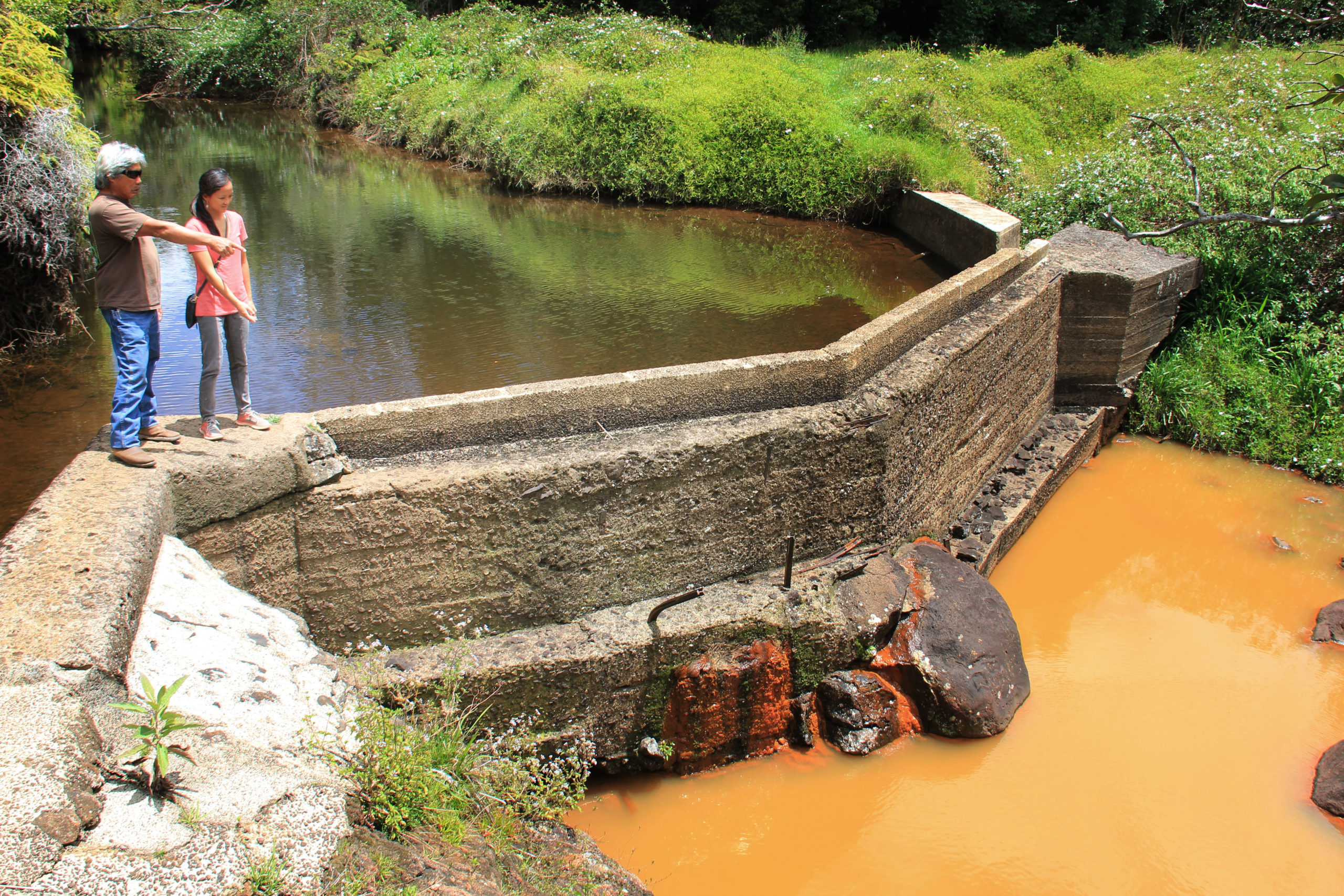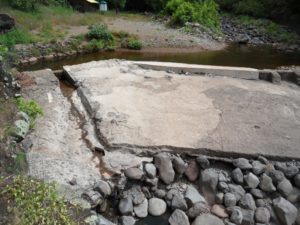
Waimea Canyon
In 2017, Pō‘ai Wai Ola/West Kaua‘i Watershed Alliance, represented by Earthjustice, reached a historic settlement to restore flows to Waimea River and its tributaries after over a century of diversions. But the work continues to protect the river for future generations from companies that want to drain it for hydropower.

Waimea River kia‘i (protectors)
Waimea River is one of the largest rivers in Hawai‘i, running through the famous “Grand Canyon of the Pacific.” In earlier times, the valley was known for its extensive lo‘i kalo (wetland taro fields) and abundant stream life. One of Hawai‘i’s most famous ancient ‘auwai (irrigation channels), Kīkīaola or the Menehune Ditch, carried water around a cliff above the river to the lo‘i kalo throughout the delta.

Waiakoali Stream dam
In the past century, the Kekaha Sugar plantation diverted much of Waimea River’s flows through the Kōke‘e and Kekaha Ditches, destroying the once-thriving river ecosystem and leaving only a shallow trickle choked with silt. After the plantation closed in 2000, the state leased the ditches to Kekaha Agriculture Association (KAA), whose members mainly include industrial ag companies running experimental field tests. Although their seed plots use far less water than thirsty sugarcane, KAA continued diverting the river at plantation-era levels to run antiquated plantation hydro plants and sell the energy to Kaua‘i Island Utility Cooperative (KIUC) for profits.

Kekaha Ditch diversion dam
In 2013, Pō‘ai Wai Ola brought legal action and, four years later, reached a settlement with various diverters and landowners to return flows to the watershed. This was the first major water battle in Hawai‘i that was resolved through agreement, without years of litigation.
But the work isn’t over by any stretch. KAA has dragged its feet for years to comply with the settlement. Also, KIUC is planning to build a major new hydro project that would restart large-scale diversions through the Kōke‘e Ditch for another century. The community must remain maka‘ala (vigilant) to make sure KIUC’s proposed project is pono and does not simply double up on KAA’s Kekaha Ditch diversions.
Additional Readings:
Citizens Demand Restoration of River in “Grand Canyon of the Pacific” on Kaua‘i
Grand Canyon of the Pacific Running Dry
Flows Restored To Waimea River And “Grand Canyon of the Pacific”
